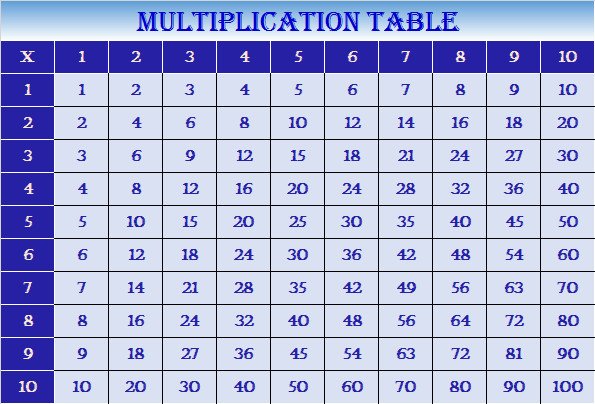MULTIPLICATION TABLE: A WAY TO MAKE LEARNING FUN

When I started teaching mathematics, I got to teach students aged ten and eleven. Most teachers believe they should not demand of students to know anything by heart. While I agree it's important to understand concepts, I also believe it's important for kids beginning their math studies to know the multiplication table.
But how to make it interesting for them?
I devised a method. Even though I am a competitive person myself, I don’t like competition. So, I thought of an exercise that would demand memory and would exercise their minds, one that required competition not against other students, but against one's own previous attempts.
This is how it works: the teacher prepares a few multiplication questions and give them faced down to the students, with the instruction not to turn the page. They write their names and date on the back of the page. All students start the test at the same time, while the teacher waits with a stopwatch.
The test should take an average student about three minutes, if he knows the multiplication table by heart, that is. Once a student is finished, he delivers the test and the teacher writes how long it took him, to the second.
After four minutes, students were required to deliver their tests, leaving blank whichever questions they couldn't answer. These students required special attention and that is what I'd give them if it happened more than twice.
I'd grade the tests at home, keeping in a spreadsheet each student's amount of right, wrong and blank answers, as well as the time it took him to finish the test.
It was a very personal process. Each student needed to improve his or her own performance the next time around: either by delivering less mistaken or blank questions, and by obtaining a better time.
Ah, and there was, of course, an incentive in the way of grades. For each performance improvement, students would get a 0.1 bonus to their grades, for a maximum or 0.3 (in Brazil, students are graded from zero to ten).
This method was usually very effective in stimulating students to improve their results. It was demanding for me to come up with the tests, which I could do only when I had some free time in my schedule. It was also necessary to correct the tests afterward, then make the statistics and so on. But it was worth it to watch them make the effort to improve themselves.
This project was one of the best I managed to accomplish. Even students that did not like math would be affected by the spirit of the activity and would try to excel.
I wish to mention that several students have shown to be little geniuses. One of them would complete the test in less than a minute – he was a fast thinking machine. But even if the other students knew that one in particular was faster and was very good in multiplication, they didn't actually know much. They didn't know each other results at all. What made this project a success is the fact that a student would only be compared with his own previous results. For example, a kid that completed the tests in 2m35, 2m20 and 2m10 would receive the same extra 0.3 to his grade as if he had delivered at 3m10, 2m50 and 2m40.
I found this project accomplished many good results. My little students had a chance to see how much fun mathematics can be, they would exercise their memories, they would improve their learning skills and, ultimately, they got motivated to try and overcome themselves.
Forget children - this one is for me! Great mental workout - thank you!